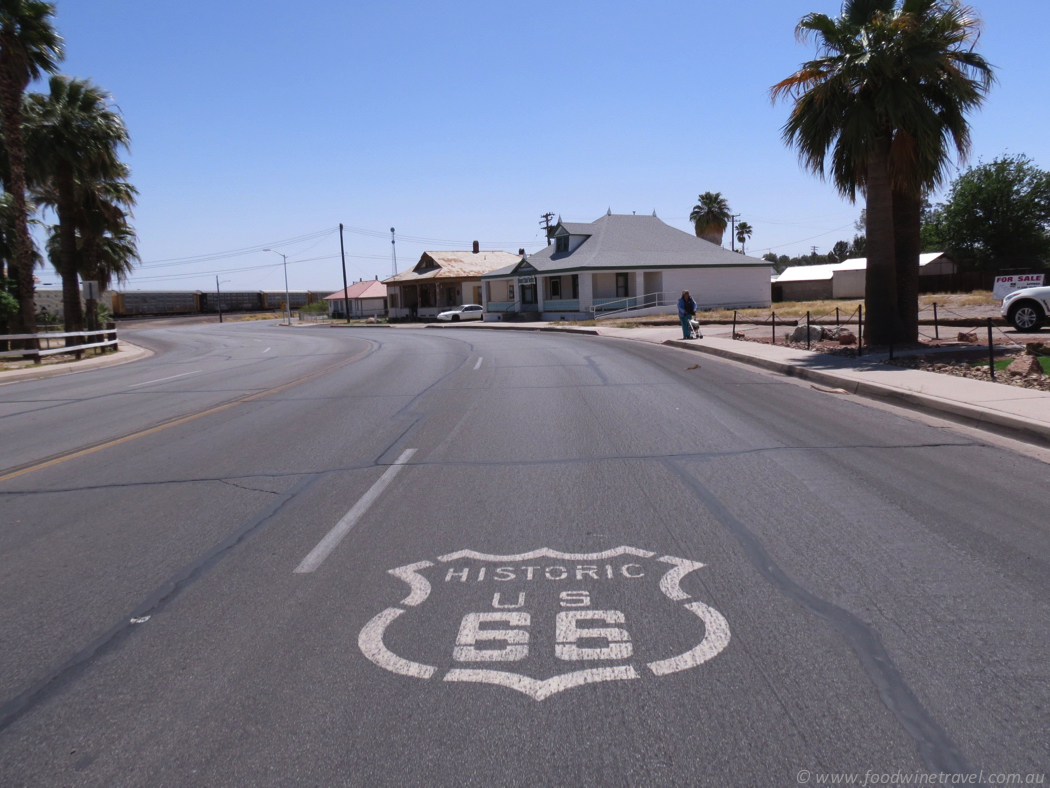
We wanted to get our kicks, but we were in fact motoring east, not west as the song suggests, following what was left of the old Route 66, the iconic highway that thousands travelled to reach the promised land of California. The iconic status is certainly in evidence on Santa Monica Pier, where the road ends at the Pacific Ocean and where everyone buys the t-shirt and poses for a photo under the Route 66 sign. In fact, they queue to get their photo taken and I wondered if they’d all actually driven along the road.
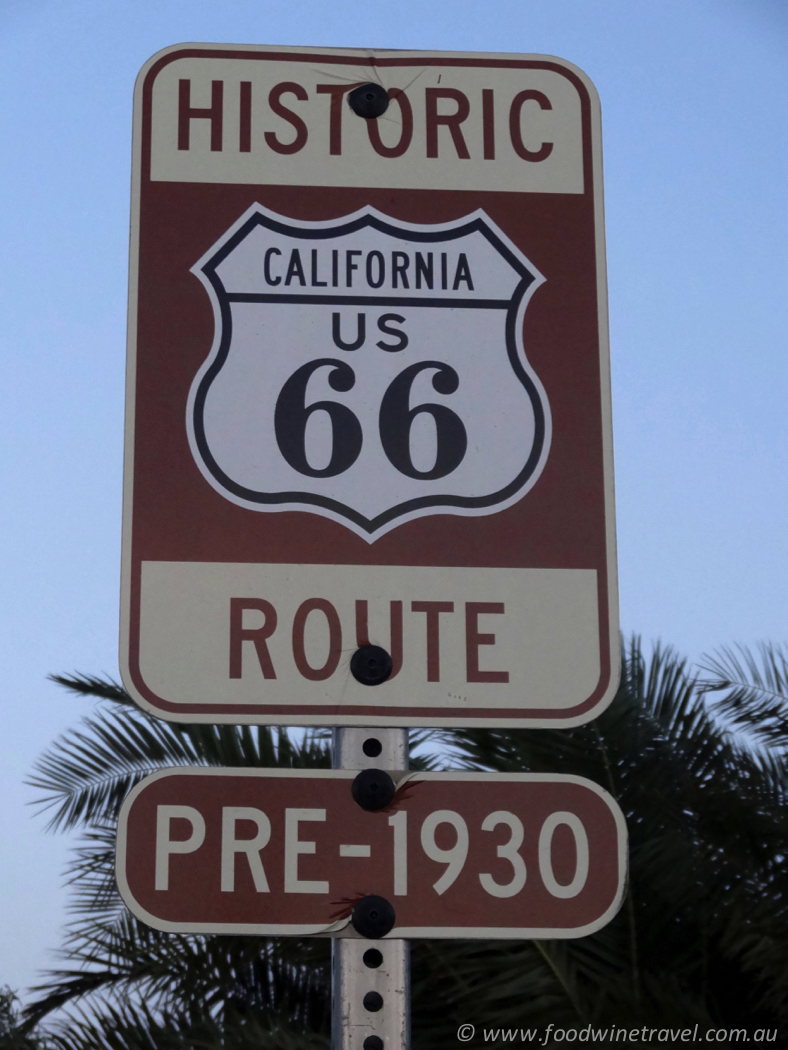
The reality is that a lot of Route 66 doesn’t exist anymore and much of it is the highway equivalent of a ghost town – closed down, abandoned, ravaged by sand, wind and time. This is third world America clinging to a trickle of tourists playing the song on their car stereo and fuelled on nostalgia for the ‘50s and those ‘happy days’. But this is a journey worth taking for a glimpse of America you definitely won’t see in the major cities.
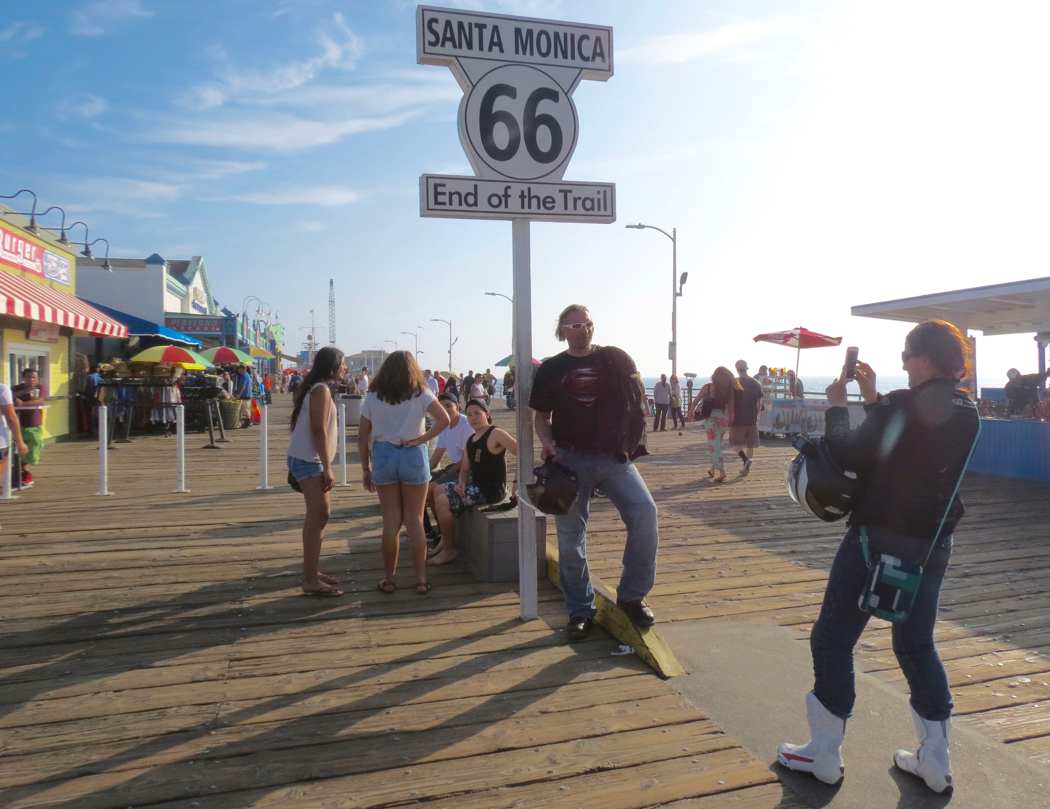
From the coast of California we headed east to our first major stop, Barstow. The desert landscape had already imposed its eerie presence well before we got there. The only reason I knew anything about Barstow was because of the opening of Hunter S. Thompson’s Fear and Loathing in Las Vegas. “We were somewhere around Barstow, on the edge of the desert, when the drugs began to take hold.”
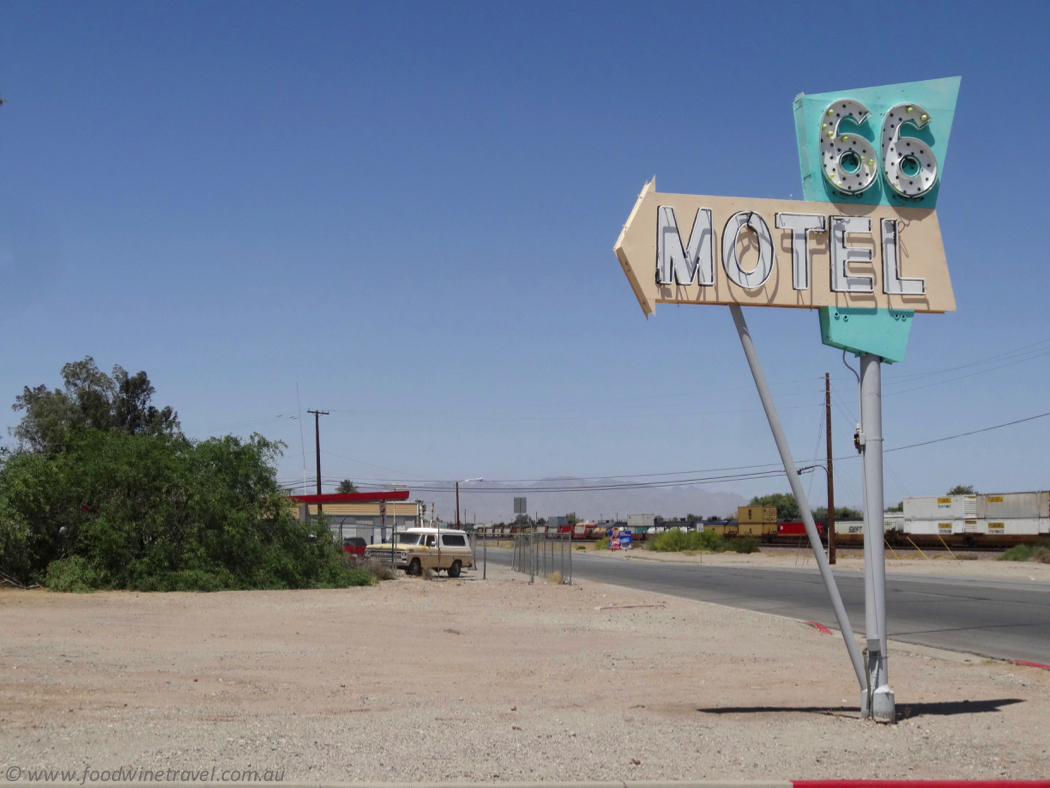
This small town on the edge of the Mojave is a milestone and a crossroads, a place where you know you’ve got somewhere and you know you’re going somewhere else. Located about half way between Los Angeles and Las Vegas, Nevada, it’s a major transport and rail centre where the Interstate 40, the Interstate 15 and Route 66 all come together. At the railway station you can find both the Route 66 Mother Road Museum and the Western American Railroad Museum.
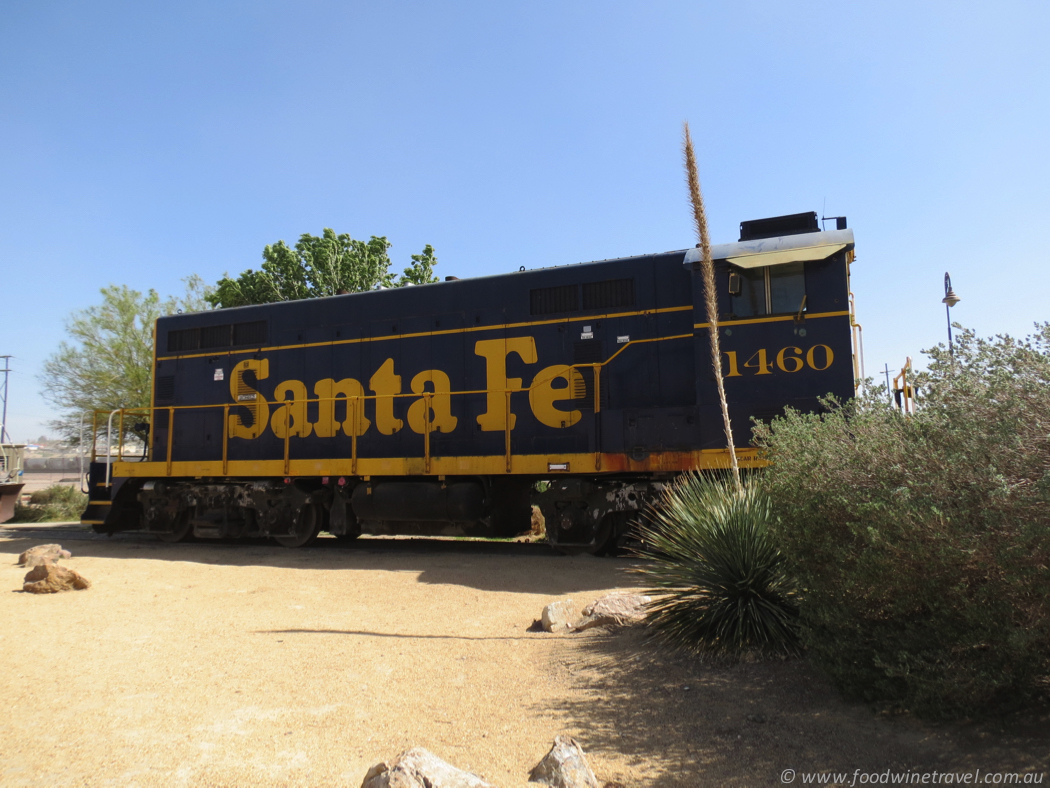
The station building is one of the original Harvey Houses, Casa Del Desierto, built in 1911. Wandering through it I was getting visions of some of the old American movies I’d watched on TV as a kid. No, the drugs were not beginning to take hold. In the 1946 Hollywood movie, Harvey Girls, Judy Garland becomes a Harvey Girl and sings “On the Atchison, Topeka and the Santa Fe”, a reminder that before everyone was driving west in motor cars they actually travelled on the Transcontinental Railway.
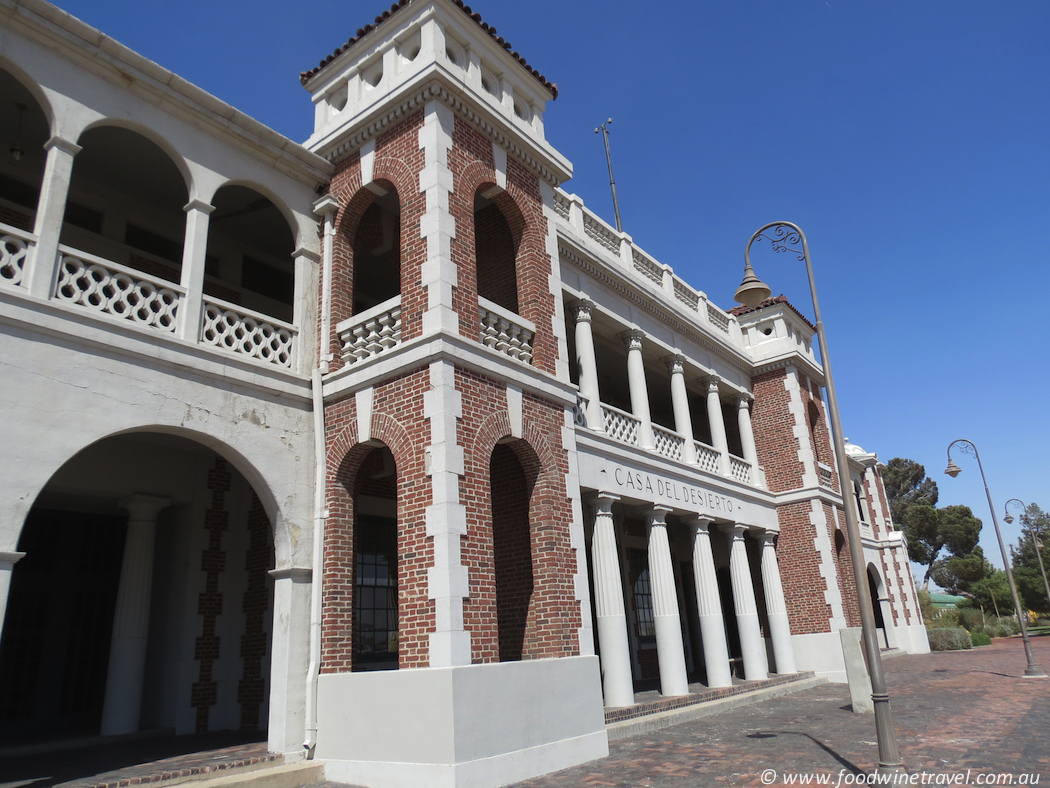
With the advent of the railway, Fred Harvey had set up the grand Harvey Houses to provide clean and affordable accommodation and good food at major stops along the way. Some were still operating up to the 1960s. The Harvey Girls were the young women who staffed those establishments and were in turn provided with board and a wage that meant independence and status. They were well trained and required to maintain a high level of conduct and service.
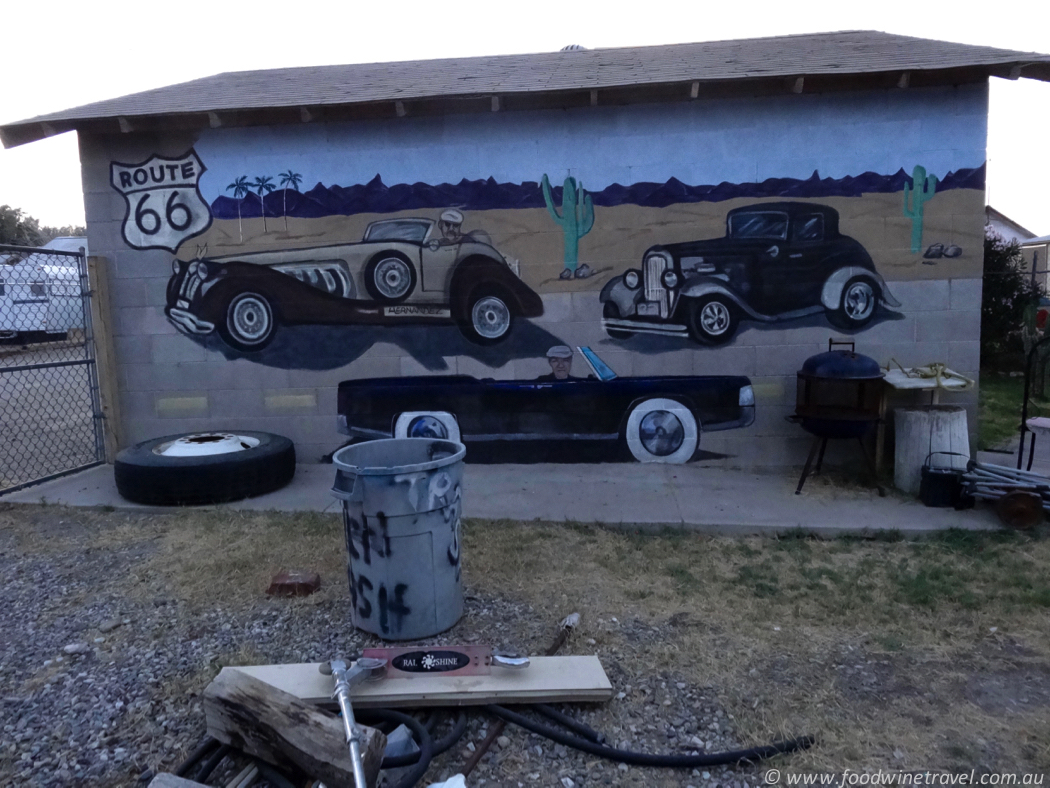
If you happen to be in Barstow at the right time, some of the big annual events include the Sand Castle Competition, the Route 66 Festival and the Miss Barstow Pageant. A few years ago the pageant was hit with a scandal when the winner subsequently engaged in some end of school pranks with her high school graduation mates. All very tame really, but it was considered by many that the pageant was brought into disrepute and, amid the controversy, Miss Barstow quietly left town. In days gone by she could have become a Harvey Girl. Everything had settled down by the time we arrived, but being there at the wrong time for the big festivals, we decided to have a meal instead.
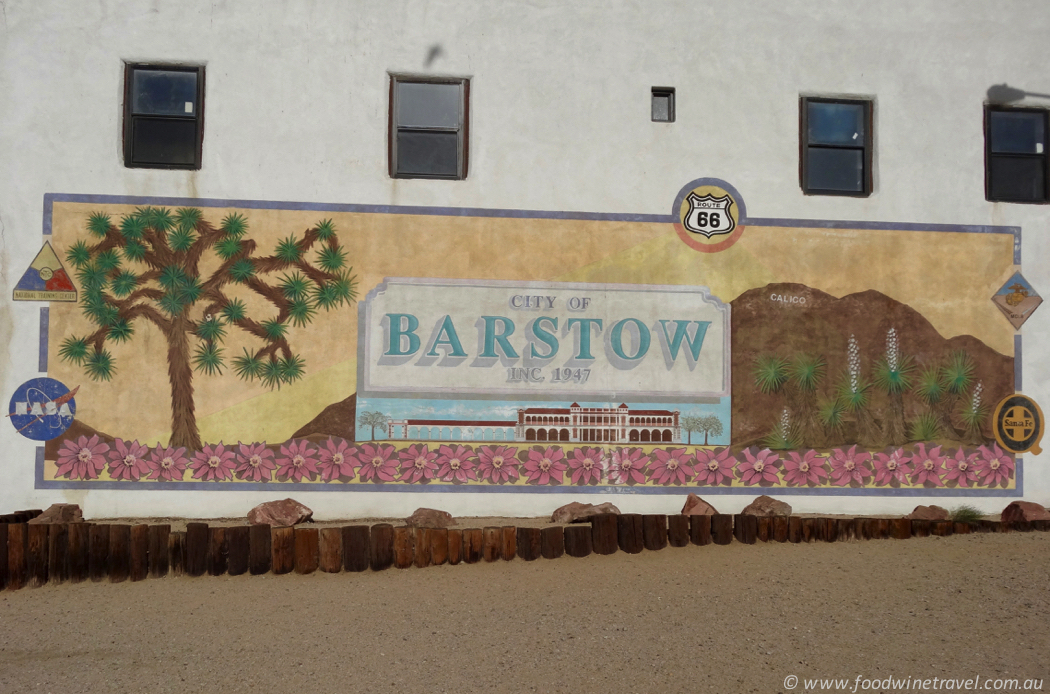
Avoiding the usual fast food joints we found ourselves at an Americanised Chinese restaurant eating chicken and cashews, rice and tuna salad. The owner told us that the best place to stop for the night was Needles, about 150 miles down the road. He’d never been there, but he had been to Hong Kong.
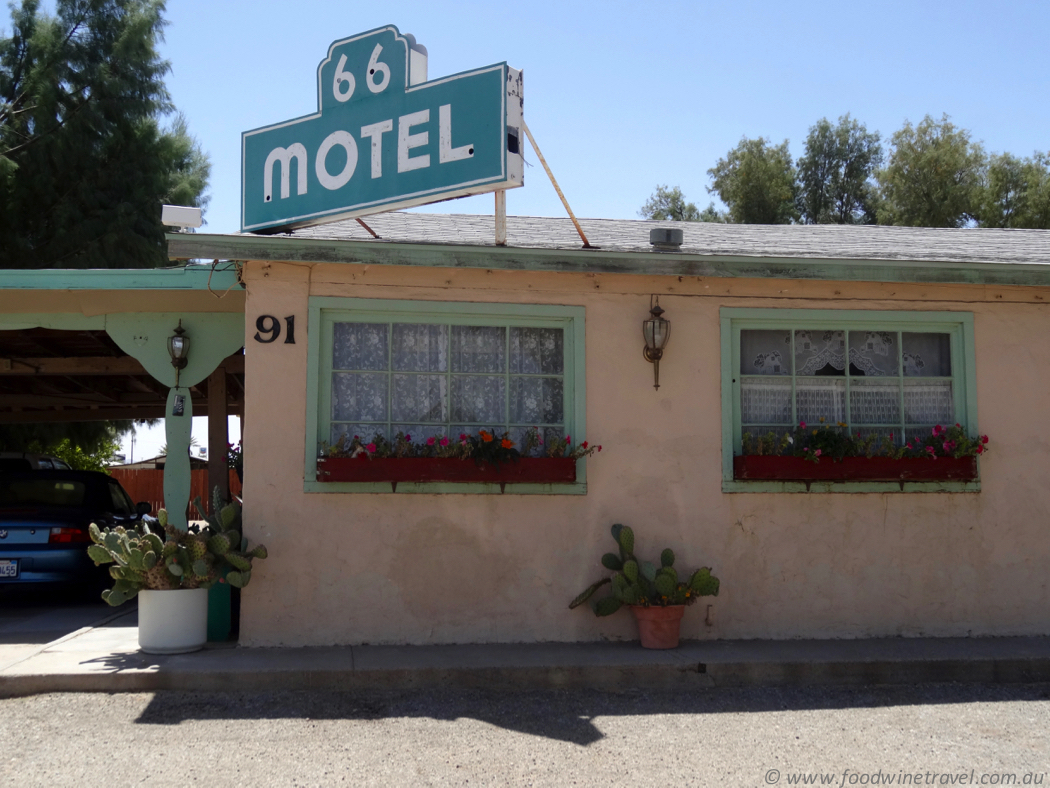
After checking out some great murals around town, we dropped into Walmart to buy some water for the journey across the desert. We picked up a slab of 36 bottles of water for $3.49 – yes, $3.49! You meet some interesting people at Walmart and most of them are camped permanently in the car park in their caravans and RVs. Walmart has a policy of not evicting anyone, so a whole community and culture has grown up in Walmart car parks.
That water went a long way, and when we ended our journey in Albuquerque to fly to the South we still had about 6 bottles left, along with some oranges we bought from a Mexican farmer at a roadside stall near Sedona. We donated them to a very grateful artist staying at the same motel who had endearingly fallen in love with our rental car.
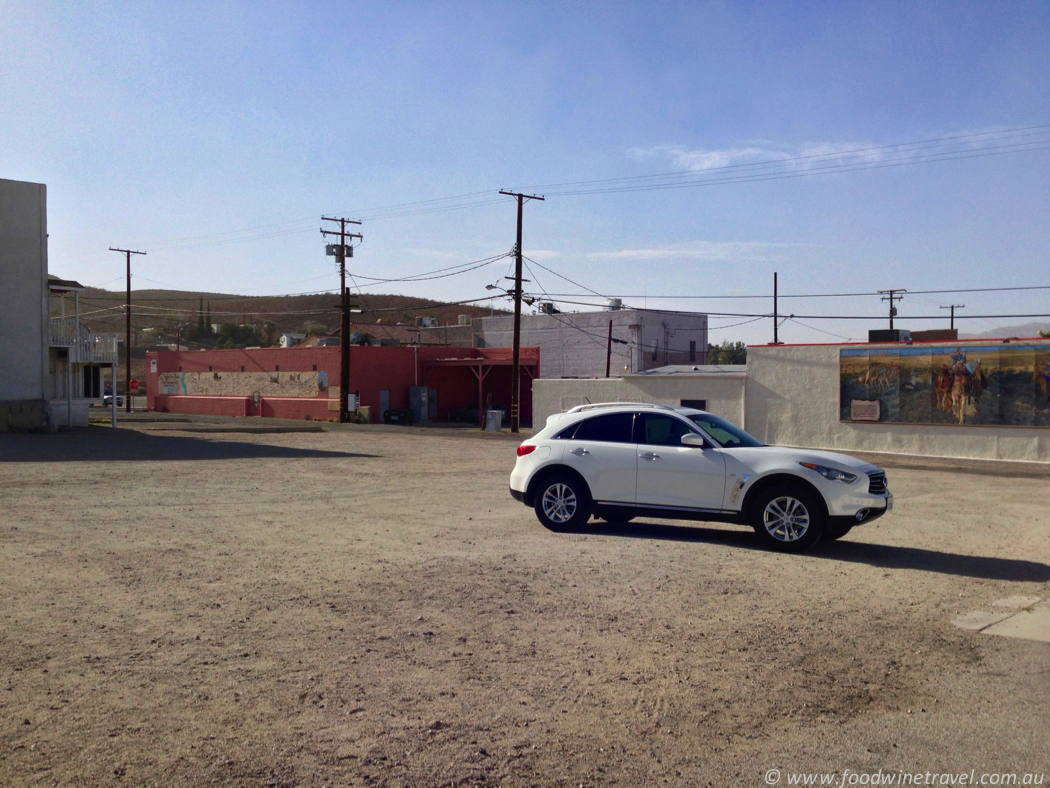
Most cars are pretty much the same to me, but Reinord V. Whitt-Pritchette seemed to think there was something special about the curves and lines of our car. Rein, as he preferred to be called, had a serigraph exhibition in town and turned out to be a real character. I like to think that our gift of water and oranges may have inspired some new creation.
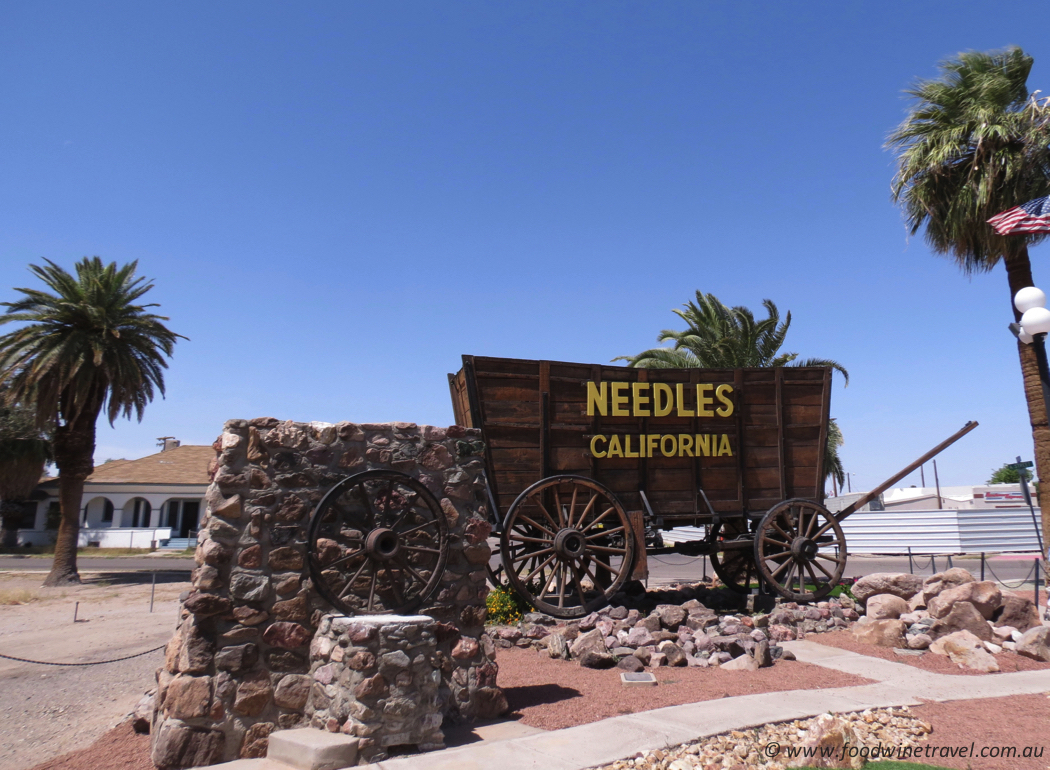
Meanwhile, back at the Mojave, the flat sandy plains are constantly in sharp contrast to the carnelian hills and mesas that rise up in monumental proportions. There is an almost surreal element to this ancient landscape and suddenly there’s Needles, a town with a past.
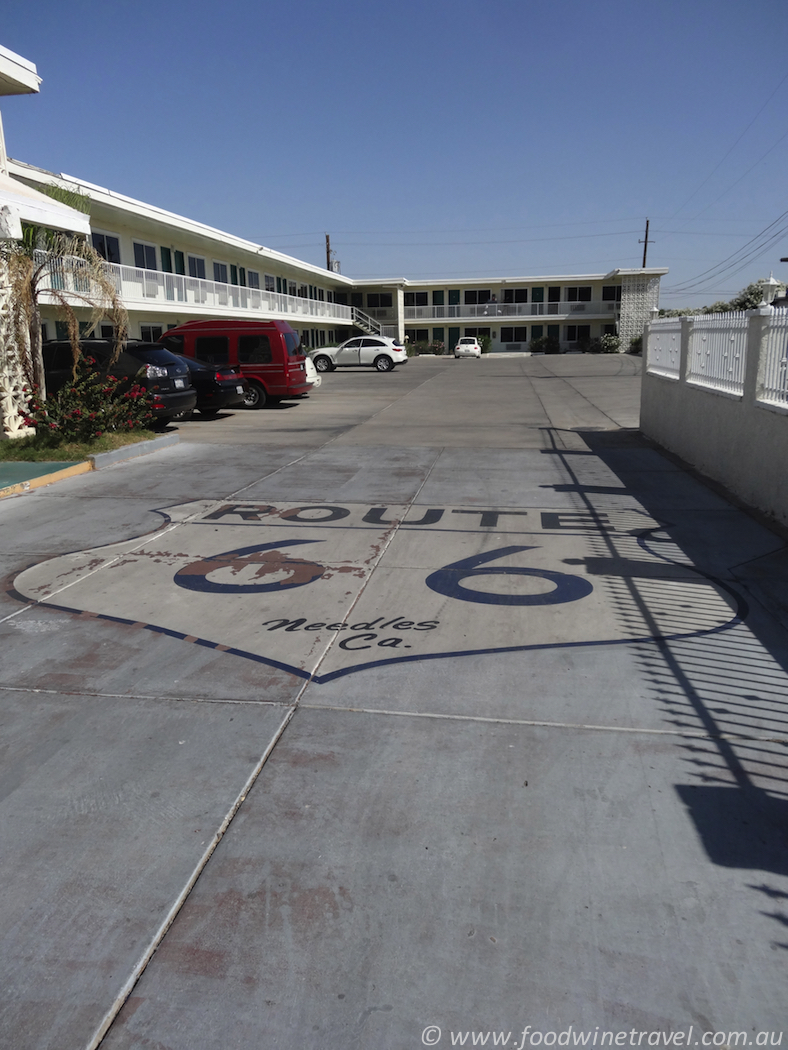
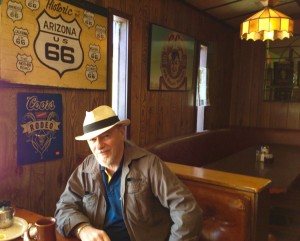
It may be called Needles but we had a comfortable night at a $44 motel and then headed to the famous Wagon Wheel diner for breakfast. It has a very strong Route 66 and cowboy theme, does pretty good bacon and eggs, and both Bindi Irwin and George Clooney’s parents have eaten there – not at the same time.
There is another splendid Harvey House in Needles and a museum run by friendly folk only too keen to tell you about the town’s past glories.
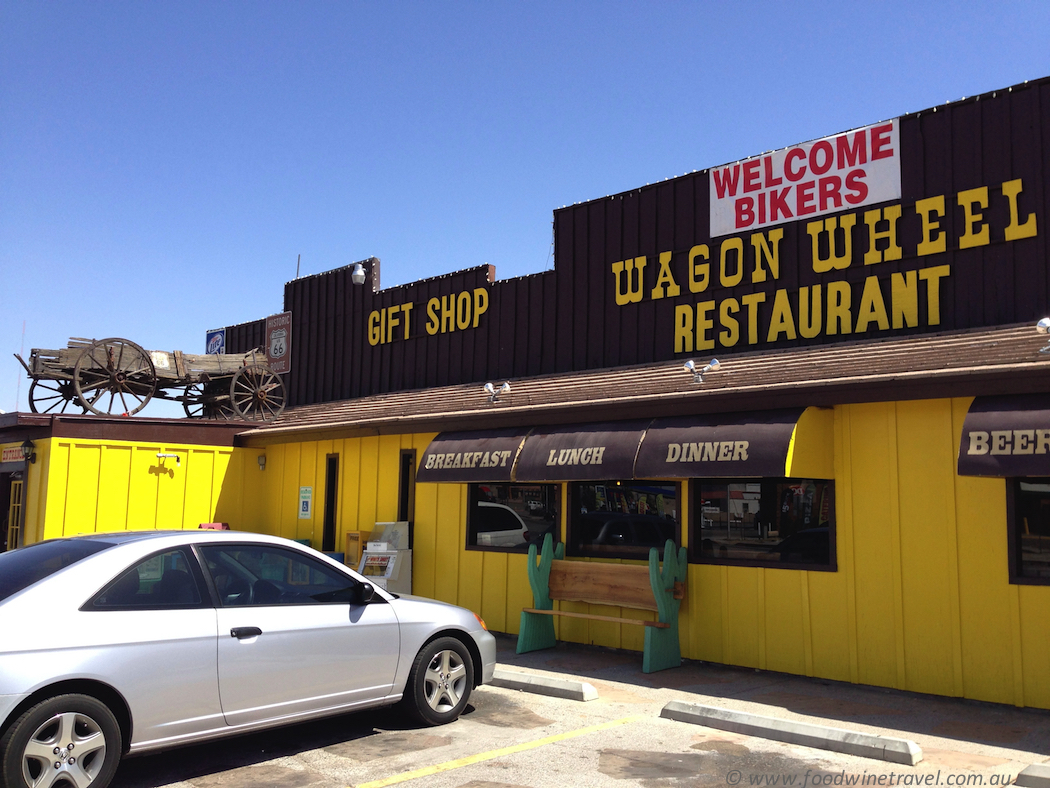
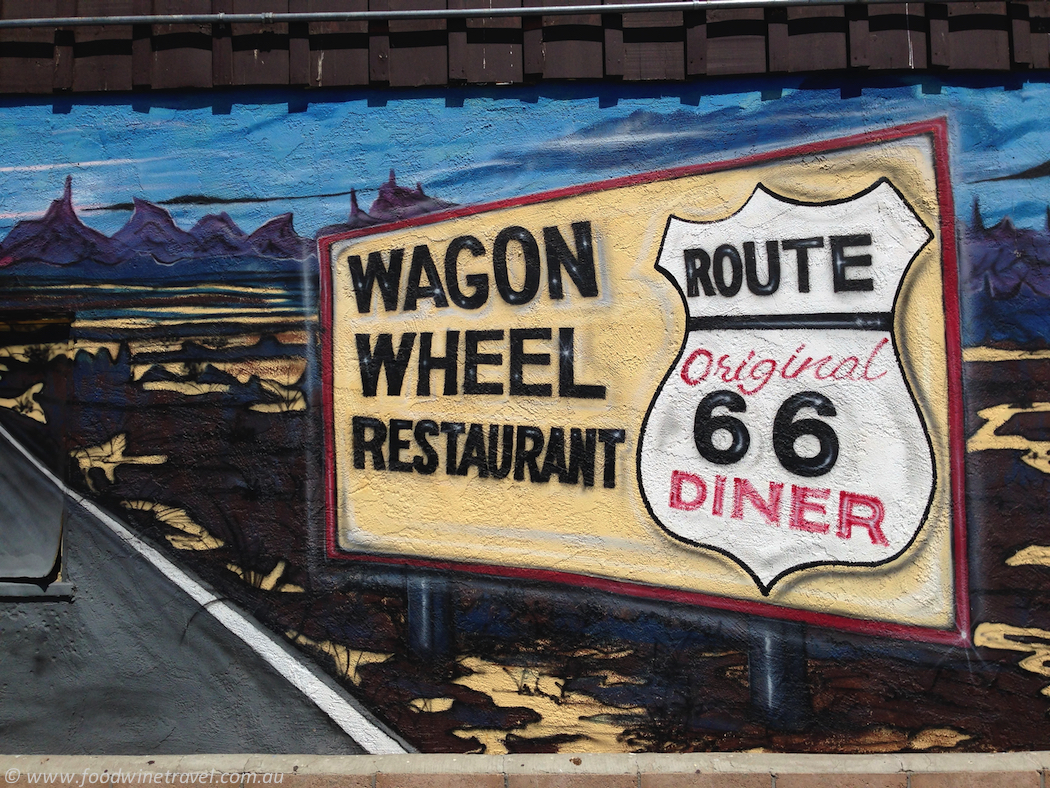
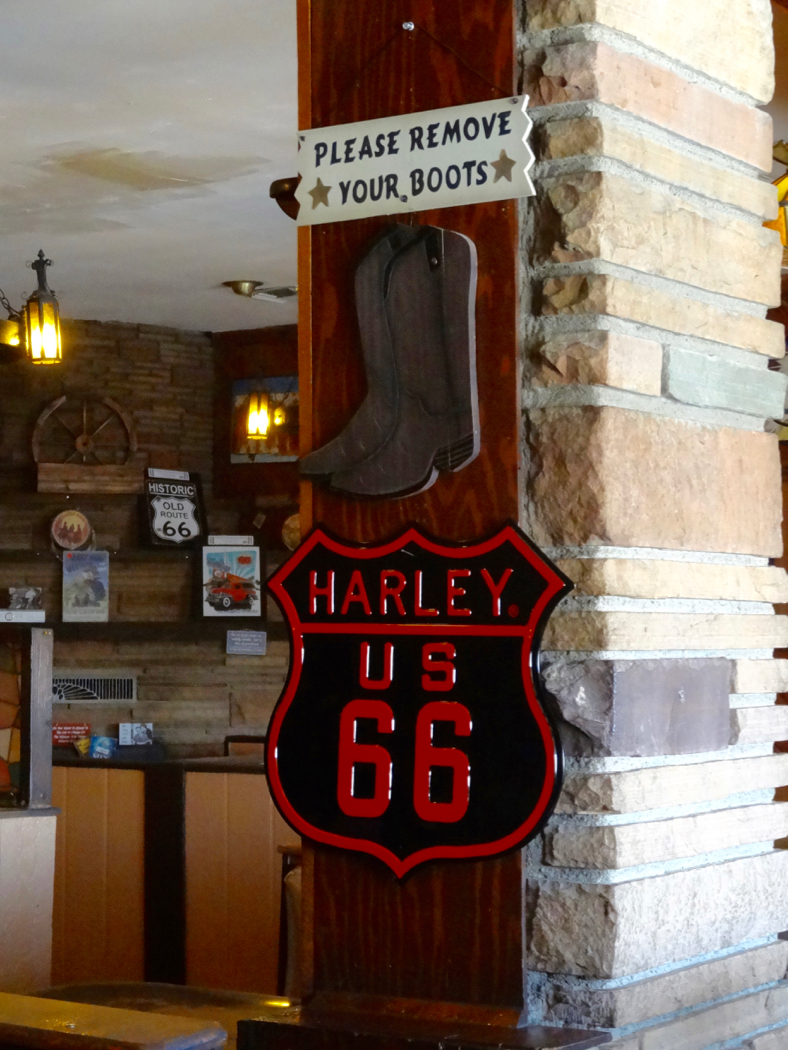
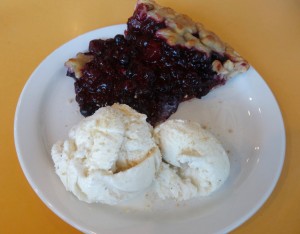
Things have slowed down a lot in Needles so we sped up the Interstate 40, which is pretty much the old Route 66, stopping for a reasonable coffee at the trendy looking Café 326 in Williams.
As we ordered a slice of homemade blackberry pie and ice cream, the owner told us that the pie had collapsed when she took it out of the oven so it was on the house. Nevertheless, it sure tasted good. Make a note of this place.
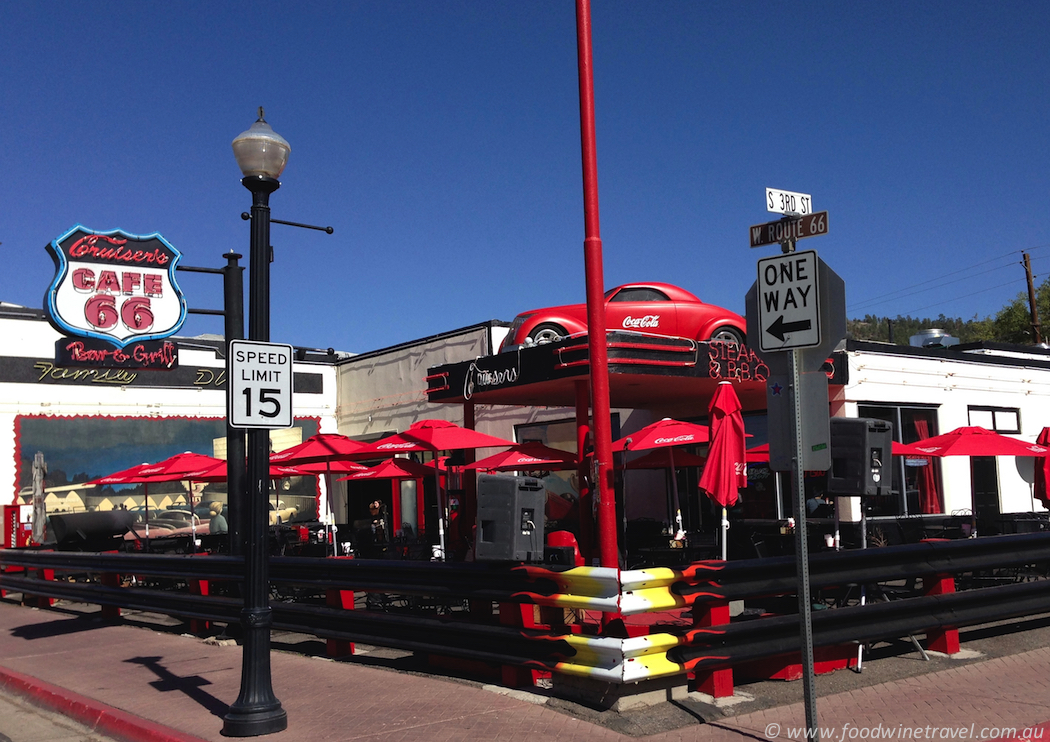
We detoured to the Grand Canyon but came back onto Route 66 at Flagstaff, Arizona. It may sound surprising but Flagstaff is a ski town and it actually snowed while we were there in spring. This is a big town and much more prosperous than the other smaller ones on Route 66. Flagstaff has up-market bars and restaurants, and the Fire Creek Café there did the best coffee we had in seven weeks in the US.
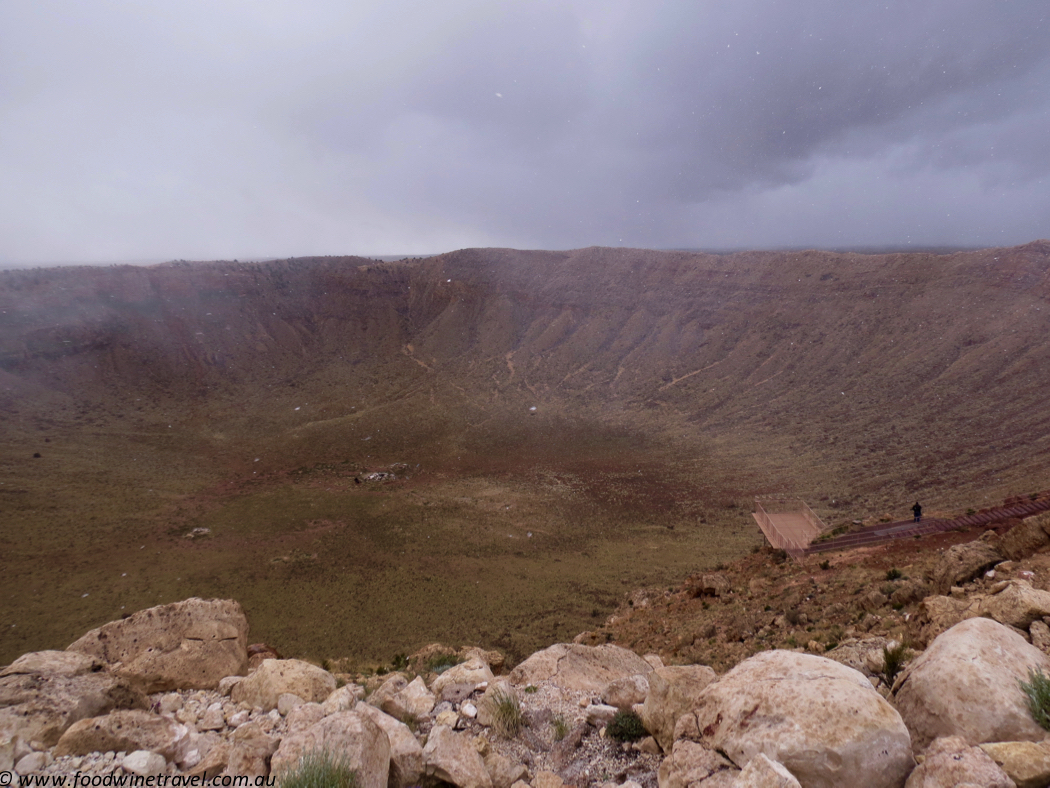
About 60 kilometres down the road is Barringer Crater, a gigantic meteor crater created about 50,000 years ago. The visitors centre provides interesting historical and scientific facts, as well as a piece of the original meteorite. A bit further down the road, Route 66 previously ran right through the middle of Winslow where you can stand on ‘the’ corner and listen to the Eagles sing Take it Easy. The last Harvey House built was here in Winslow and although once in danger of being demolished, it was saved by local residents and is now a hotel.
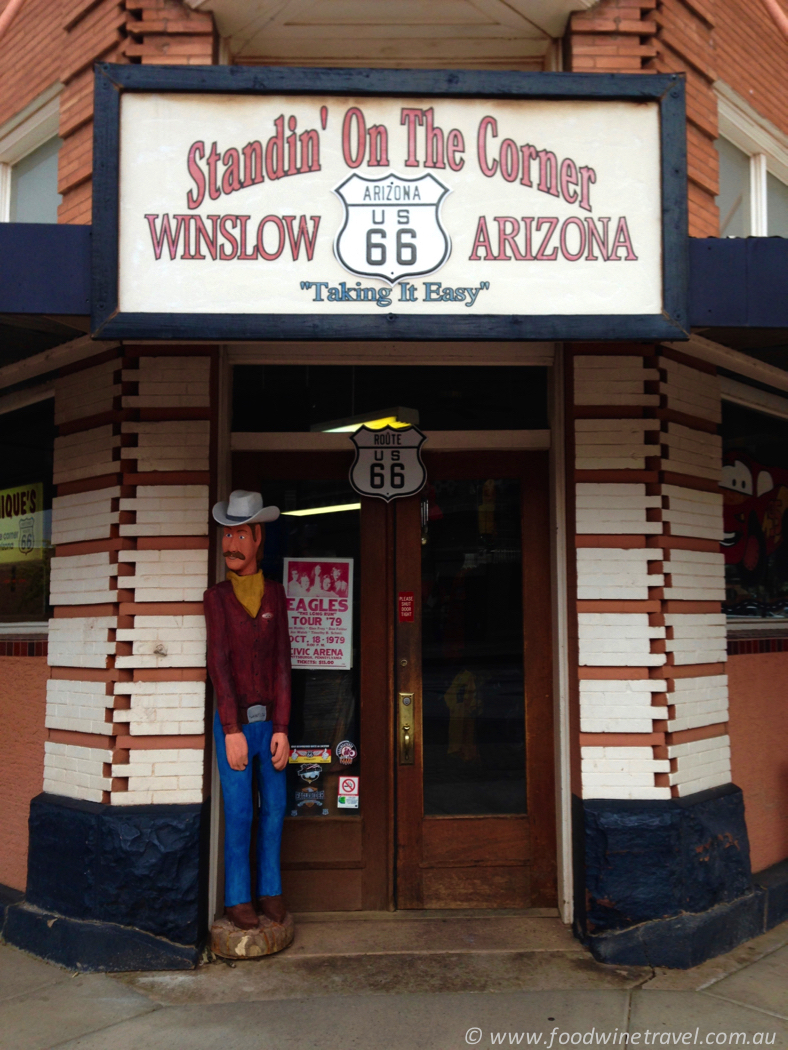
Guided by the song, we crossed the border into New Mexico and stayed the night in Gallup at the El Rancho Hotel, built in 1937 by the brother of D.W. Griffiths, and home to lots of movie stars while they filmed westerns in the vicinity.
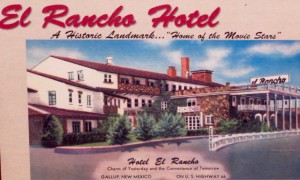 The rooms are all named after the movie stars who stayed there. We were given the Spencer Tracy room and after studying the pictures on the wall I came to the conclusion that he never looked comfortable on a horse.
The rooms are all named after the movie stars who stayed there. We were given the Spencer Tracy room and after studying the pictures on the wall I came to the conclusion that he never looked comfortable on a horse.
This is a fascinating hotel with lots of history and atmosphere and a good simple restaurant with good food.
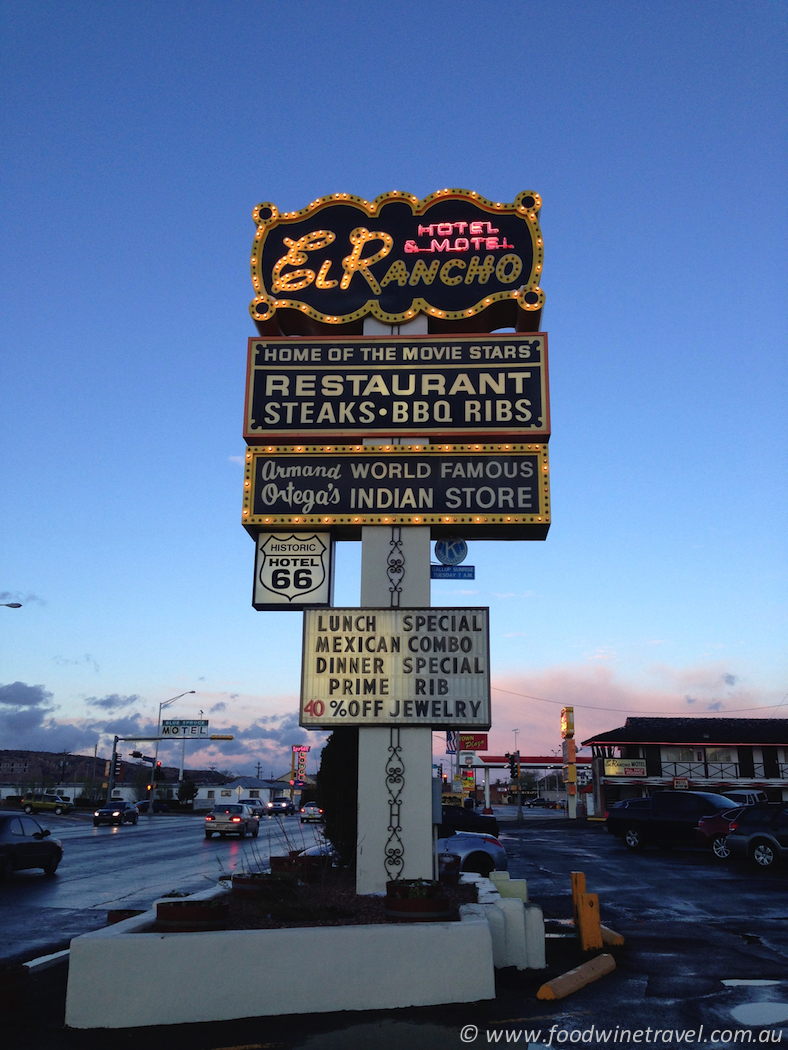
Back on the road next morning we drove into Grants, New Mexico, looking for breakfast. The town was originally a railway depot and later relied on uranium mining, but the uranium mine also closed down, along with almost everything else. There was one diner open so we rocked in for the green eggs and ham – no … actually no radiation; the meals were quite good and the serves enormous. It was Sunday and crowded because it was where everyone went after church.
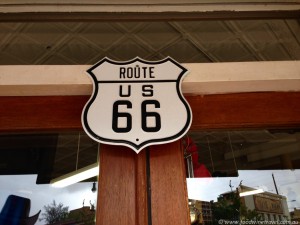 The waitress told us some Australians had been in for dinner last year and she suggested that we might share one meal between us – she had really got to know Australians.
The waitress told us some Australians had been in for dinner last year and she suggested that we might share one meal between us – she had really got to know Australians.
She was surprised that people from halfway around the world would know about Route 66 and want to drive along it. “It’s mystical,” I said. “Really?” she replied, gazing out to the wind-swept deserted road and the rusting pick-up trucks.
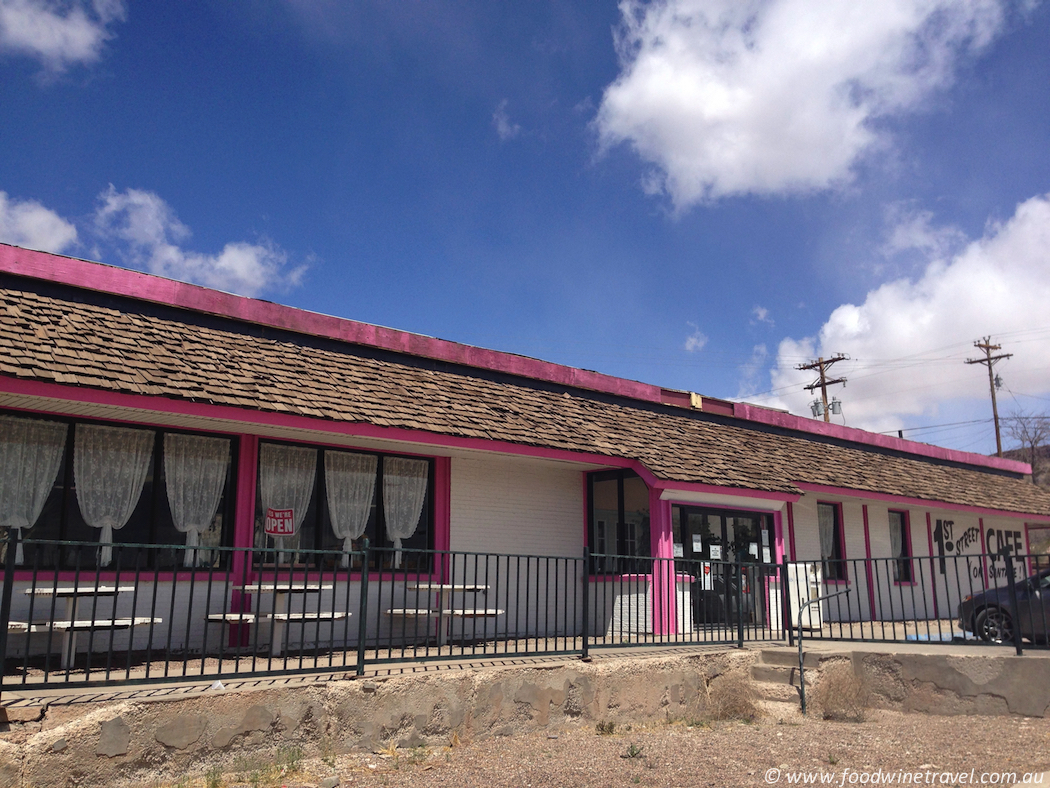
Around here you’ll find a string of old Route 66 motels with the kind of signs that once belonged on postcards. Although many are now abandoned, a new interest in driving this road may see tourism picking up. The question is, will it be enough to revive some of these towns?
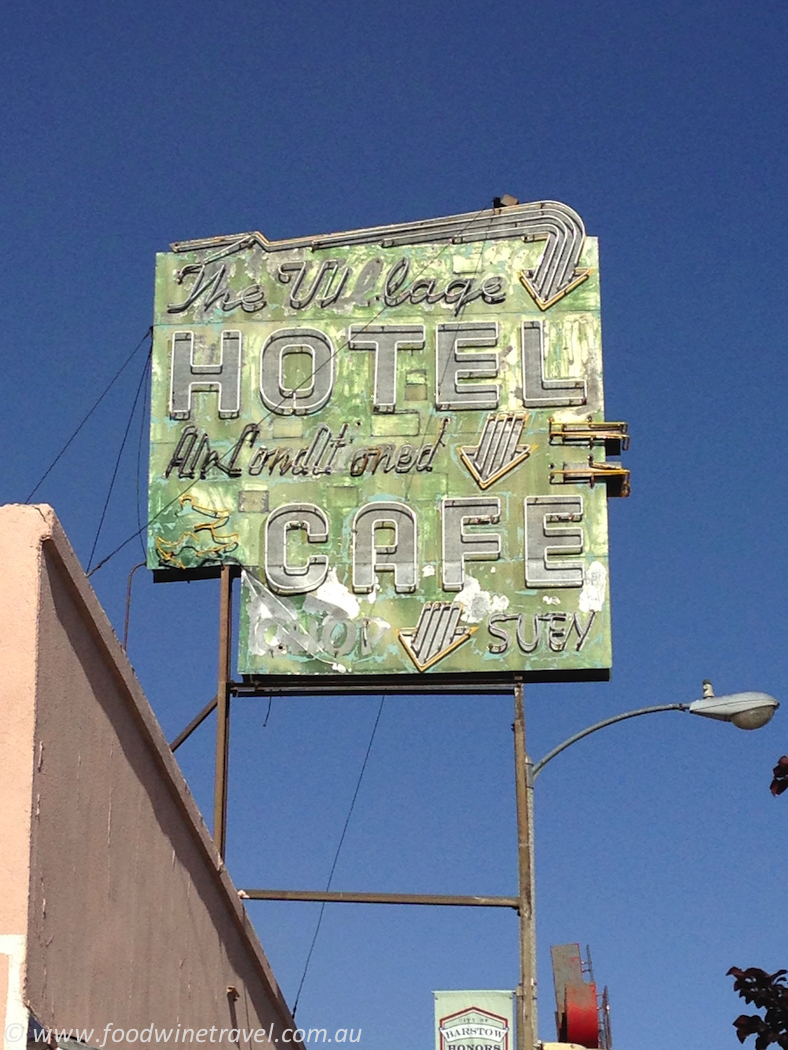
Before detouring to Santé Fe for a few days, we headed to the original Las Vegas in New Mexico. It was notorious in the old west, frequented by outlaws, gamblers and speculators. Doc Holliday, Jesse James, Billy the Kid and many other desperados hung out here. It has a rich and colourful history, unique architecture and unlike its namesake in Nevada, it’s real. We stayed at the historic Plaza Hotel built in 1881 and overlooking the picturesque Plaza or central square. Among many other films made in Las Vegas, the Coen brothers’ No Country For Old Men was made here in 2007.
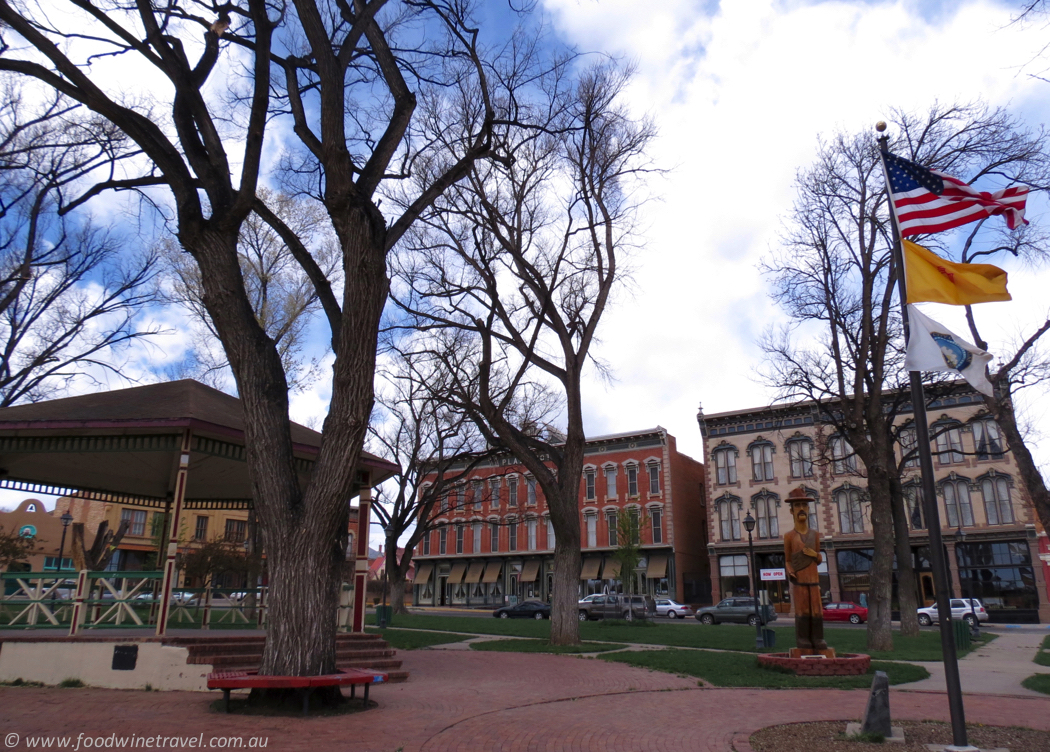
The Plaza Hotel was where cowboy Llewelyn Moss (played by Josh Brolin) went into hiding but was tracked down by Javier Bardem in the character of Chigurh. I asked for that particular room but was disappointed to learn that it doesn’t exist. Although the scenes were filmed in the hotel, the room was made up in the studio.
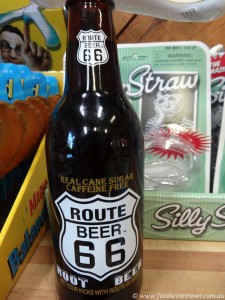 We did, however, get a great room overlooking the Plaza. This place has history and atmosphere and although the rooms are spacious, comfortable and beautifully decorated, I spent a restless night watching for shadows under the door.
We did, however, get a great room overlooking the Plaza. This place has history and atmosphere and although the rooms are spacious, comfortable and beautifully decorated, I spent a restless night watching for shadows under the door.
On one corner of the Plaza, there is an old-fashioned drug store, still in operation, with the original fittings and décor. It’s one of the many points of interest if you do a walking tour, along with Castenada House, an original Harvey House down at the railway station.
The Harvey Girls lived across the road in a building that was once magnificent but now badly in need of renovation.
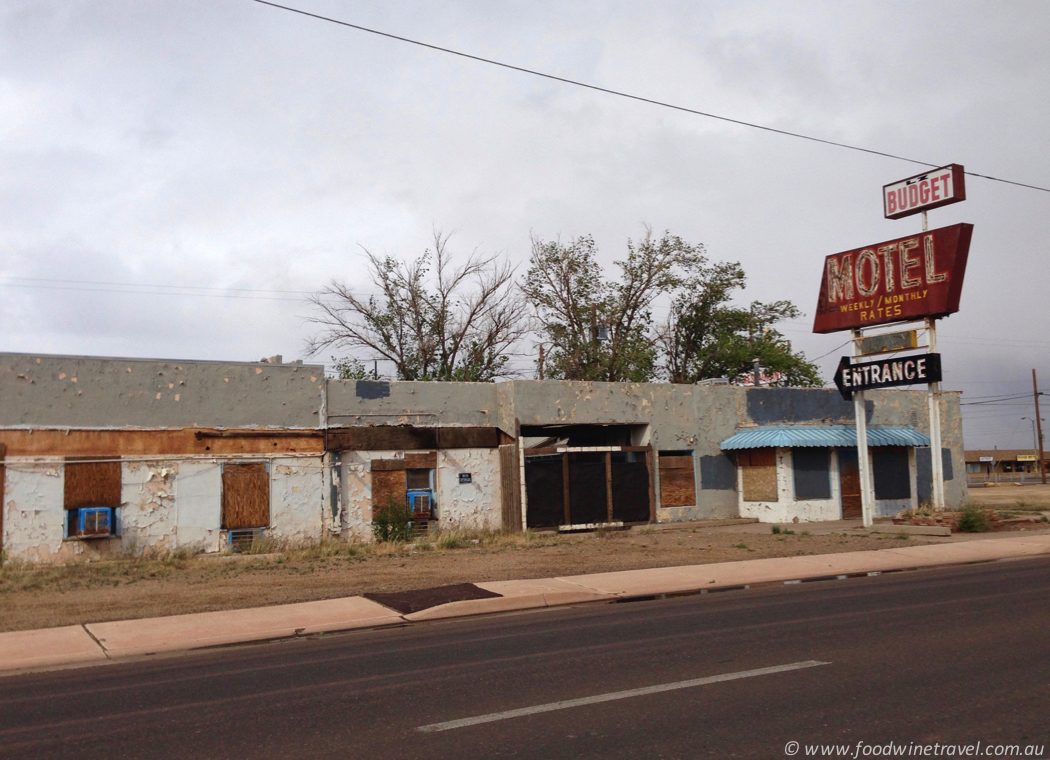
Just like all the places along the old Route 66 and the Santé Fe railway, Las Vegas has seen better days, but a revival and reversal of fortunes may be on the way. The number of American and foreign tourists travelling Interstate 40 and the remains of Route 66 is steadily increasing. Apart from all the places selling Route 66 souvenirs, there’s a lot of history and a lot more to see along the way than you might think. There are also some quirky experiences and interesting characters.
Don’t just buy the t-shirt or the number plate — take my tip: take the trip and motor east.
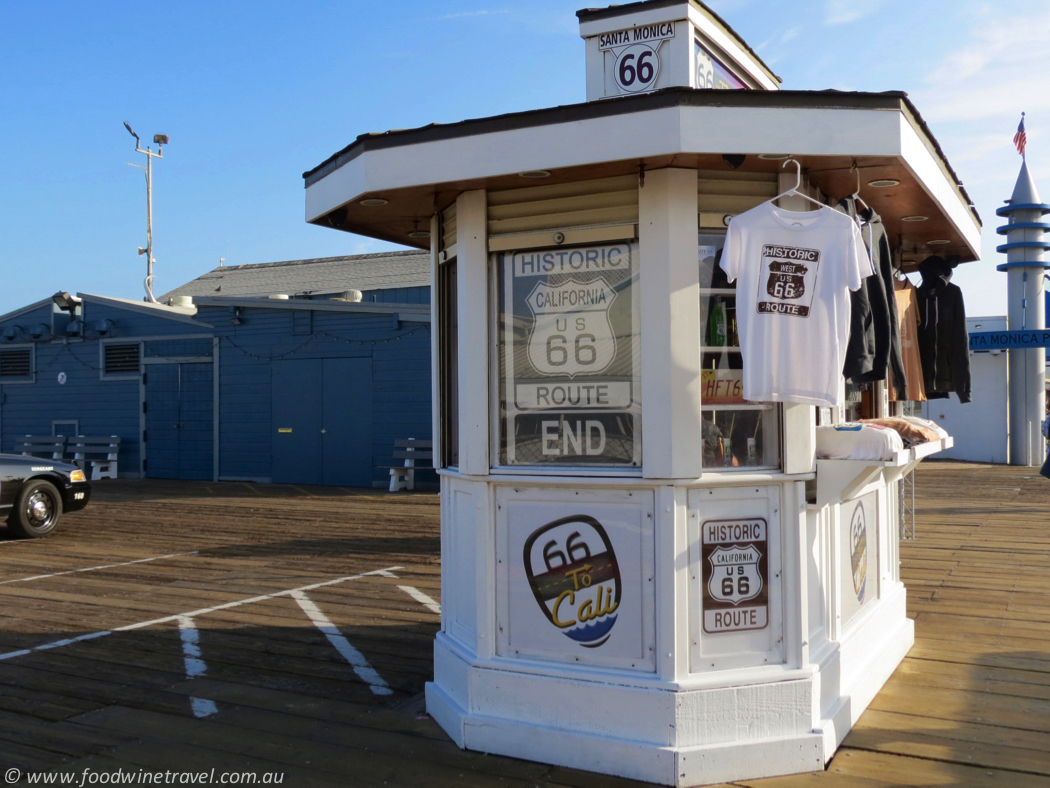
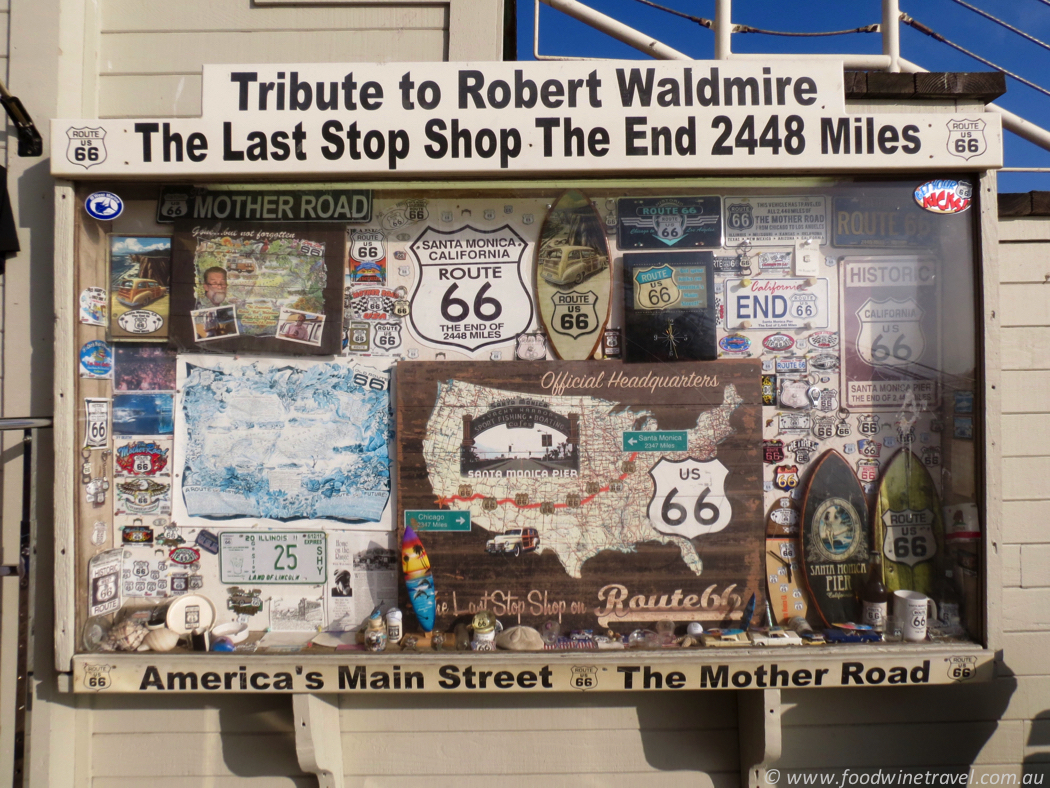
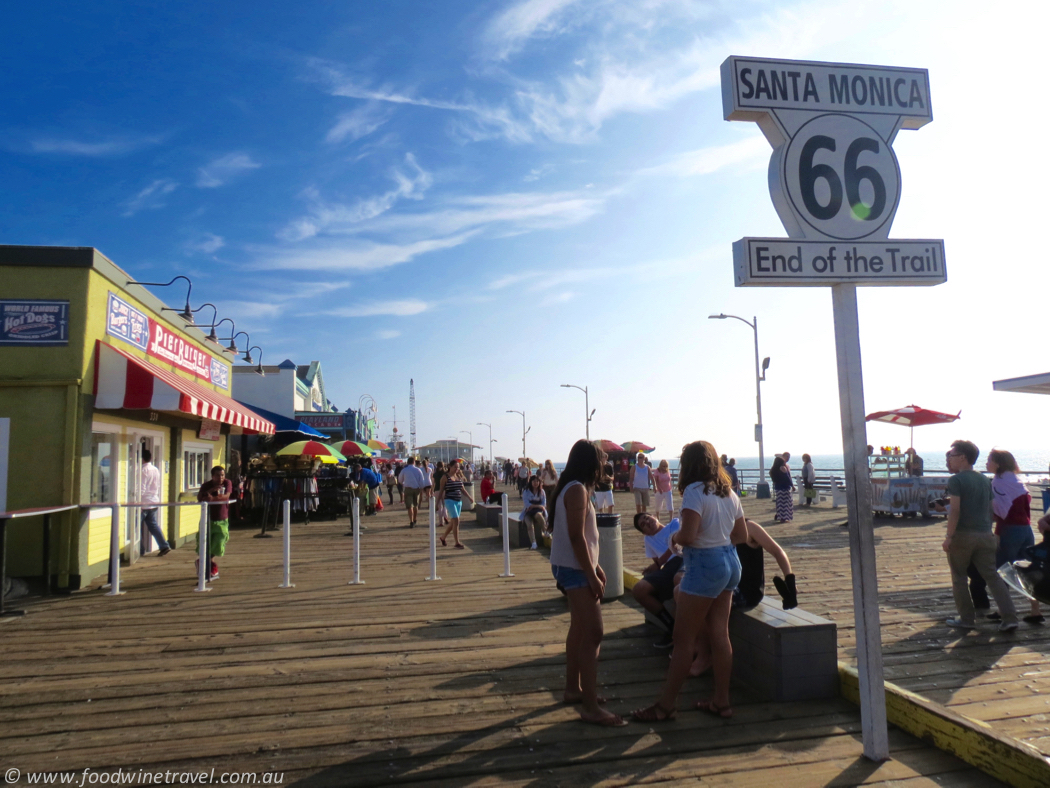

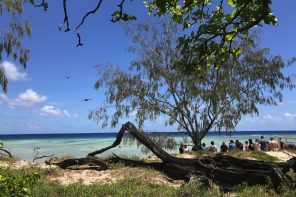
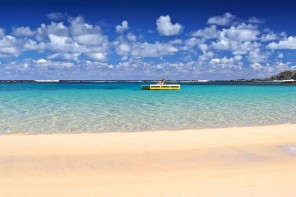
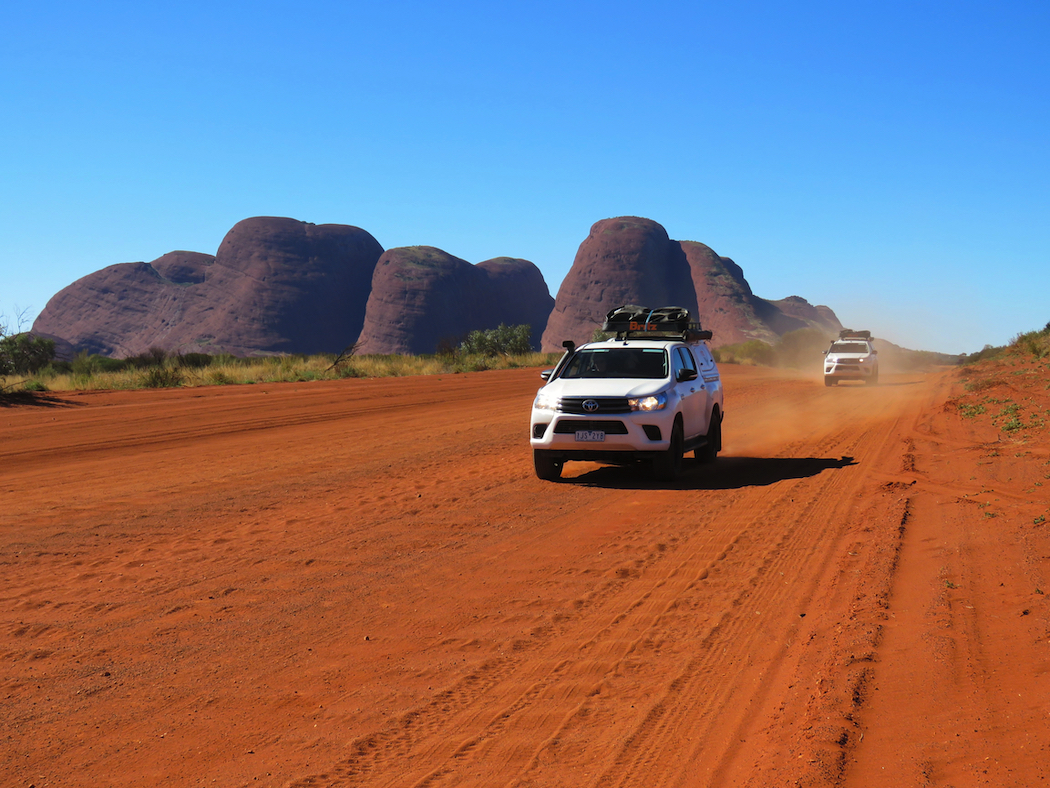
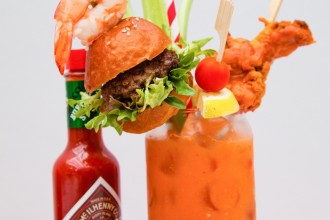
Loved this story! I’ve driven most of Route 66 but now want to go again!
Love your photos! I can’t wait to road trip around the US one day!
Thanks Sophie. We can highly recommend it!